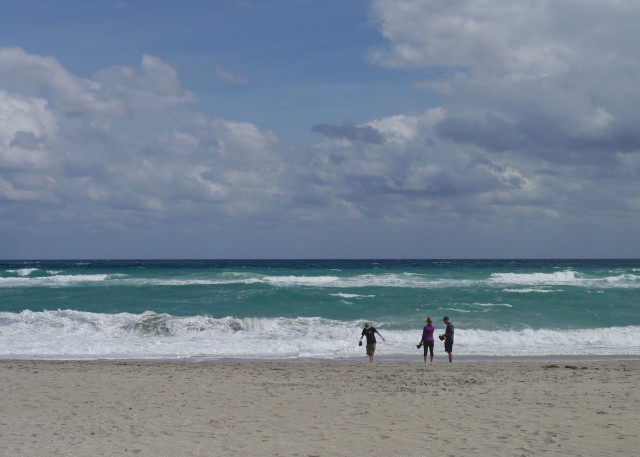
Although unofficially celebrated for years, in 2009 the United Nations officially declared that World Oceans Day would be held on June 8th each year. Today is the day!
Why do we need a day to celebrate our oceans?
Because they need our help. For years, the sheer vastness of the oceans made us think that they could swallow up whatever we dished out. That is proving not to be the case.
The water that makes up most of our planet (70%) acts as a huge carbon sink. Increasing carbon dioxide in the atmosphere affects our oceans (and consequently, us). Warming of the oceans results in melting glacial ice, rising sea levels, heavy rain in some areas, and drought in others.
We can start making a difference through personal choices to lessen carbon emissions – reducing meat and fish consumption, eating more locally and sustainably grown food, and reducing our use of plastics. Below are some resources I’ve found to be helpful.
1. When consuming seafood, be aware of the sustainability issue and whether the fish is safe to eat (doesn’t contain mercury or other toxic chemicals). Learn more on the Monterey Bay Aquarium’s Seafood Watch Program.
2. Coral reefs are worldwide are endangered. This fascinating interview with scientist Margaret Wertheim at On Being describes the coral reef project. And, Wertheim says in that interview that coral reefs are a metaphor for how we can respond to environmental problems as a whole.
If you look at real corals, a head of coral is built by thousands of individual coral polyps working together. Each coral polyp is a tiny insignificant little critter with almost no power of its own. But when billions of coral polyps come together, they can build the Great Barrier Reef, the largest living thing on earth and the first living thing that you can see from outer space…. We are all corals now. ~ Margaret Wertheim, On Being
3. Our oceans are at the lowest levels on earth so everything ends up there. Pollutants from our yards and businesses, and fertilizers from farms end up in our waterways, creating “dead zones” where sea life cannot survive. Plastics and other garbage end up in the ocean and do not completely biodegrade.
This is so harmful to sea life and has created a huge garbage dump in the Pacific Ocean, named the Pacific Garbage Patch. Photographer Chris Jordan and his team spent time on the Midway Islands in the Pacific Ocean to document the effects of the garbage patch on wildlife. The results are heartbreaking. See the trailer for The Midway Journey film.
4. For a comprehensive look at the state of our oceans, watch this TED talk by ocean researcher Sylvia Earle, where she shares astonishing images and shocking stats about our oceans’ rapid decline — and her TED Prize wish: that we will join her in protecting the vital blue heart of the planet.
5. There is a passionate article about our oceans on the Virgin website – We Need a Blue Revolution.
6. Read the book, Blue Mind by Wallace J Nichols (paid link), about how being near or in the water affects our brain (in a positive way).
7. Take the Seven C’s Pledge for Ocean Conservation below (via The Ocean Project).
Consume consciously by reducing, reusing, recycling, and purchasing “green” products.
Communicate about the impacts of climate change on the ocean.
Challenge yourself daily to cut your carbon emissions.
Connect by volunteering with a local watershed or ocean group.
Celebrate World Oceans Day.
Hello Kim! I can get in at last, but I can hardly see the writing in pale grey and the spaces between the words only take after several tries!